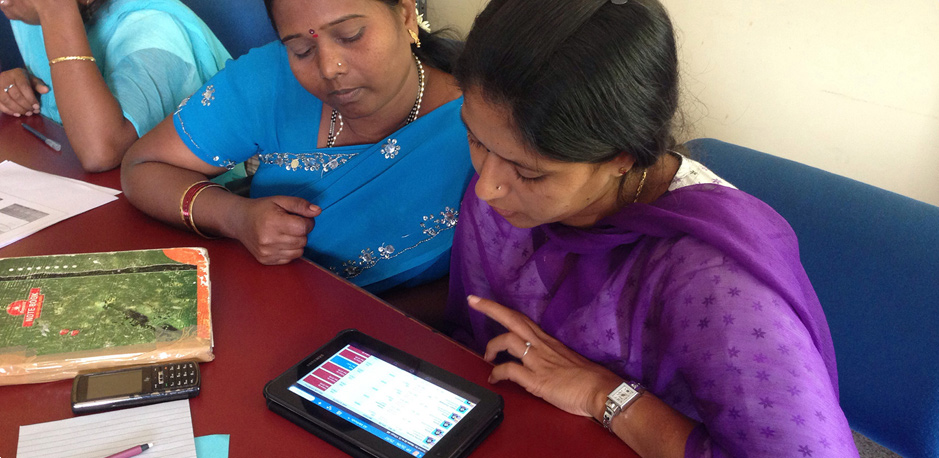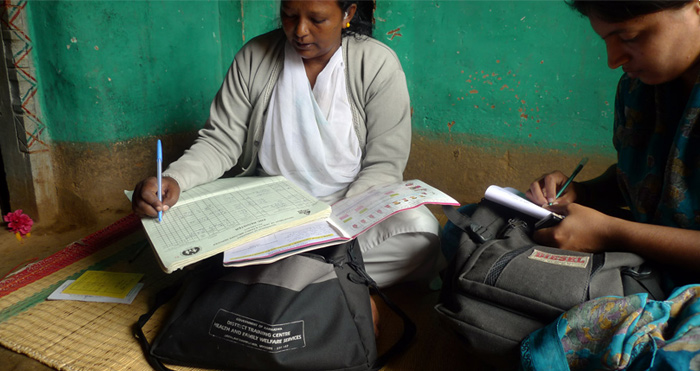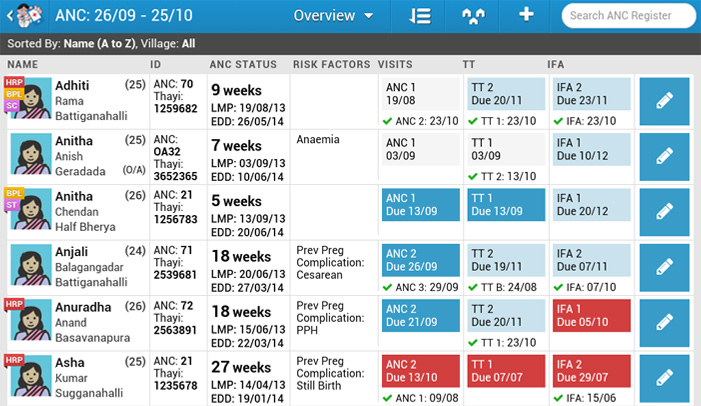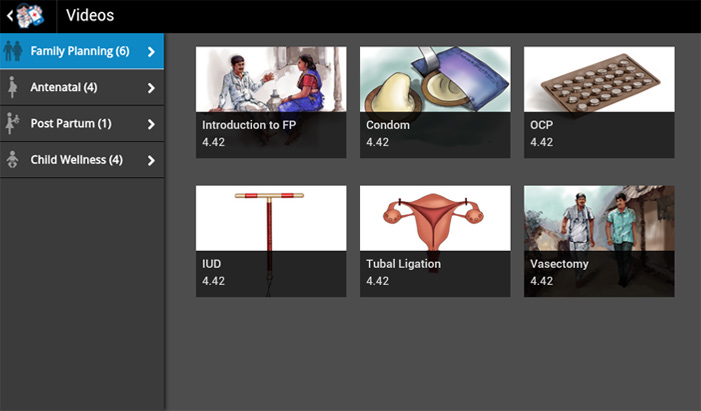Dristhi

Can mHealth revolutionize mother and child care in India? The Dristhi project aims to improve the quality of care provided by Auxiliary Nurse-Midwives (ANMs) in rural India by creating a platform that supports decision-making, alerts and scheduling. The Sustainable Engineering Lab is creating a custom app for Android tablets with research partners World Health Organization and Foundation for Research in Health Systems, and technology partner Thoughtworks.
As the first point of contact in India’s National Rural Health Mission, ANMs are responsible for providing family planning services, antenatal and postnatal care, and immunizations to women and children. The typical catchment area for each ANM is 5,000 people living in 4 or 5 villages. A major component of Dristhi is a mobile app running on Android tablets. The app replicates the current paper-based record system ANMs use while providing new capabilities such as automatic indicator calculations, educational multimedia capabilities and time and activity based alerts for high risk cases. The app saves data to the cloud, making it accessible to Medical Officers, who oversee ANMs at each Primary Health Center.

ANMs use physical register books to keep track of patients. The app we designed follows the same organizational scheme to be easy-to-learn by health workers with different levels of comfort with technology.
Project type: ICT4D
Location: Karnataka, India
Partners:
World Health Organization
Foundation for Research in Health Systems
Thoughtworks (Bangalore)
Menu:
Papers
Related Blog Entries
“The Dristhi app is designed to help ANMs provide high-quality services throughout the continuum of care for reproductive, maternal, newborn and early childhood health.”

The Dristhi app replicates the paper-based record system used by ANMs in Karnataka, India.

Smart Registers display information in a familiar tabular format. Tasks generated from WHO medical schedules are color-coded based on due date. Red boxes highlight tasks that should be done immediately.

The app provides new capabilities to ANMs such as automatic indicator calculations, cloud-synced reports, and educational multimedia videos.


